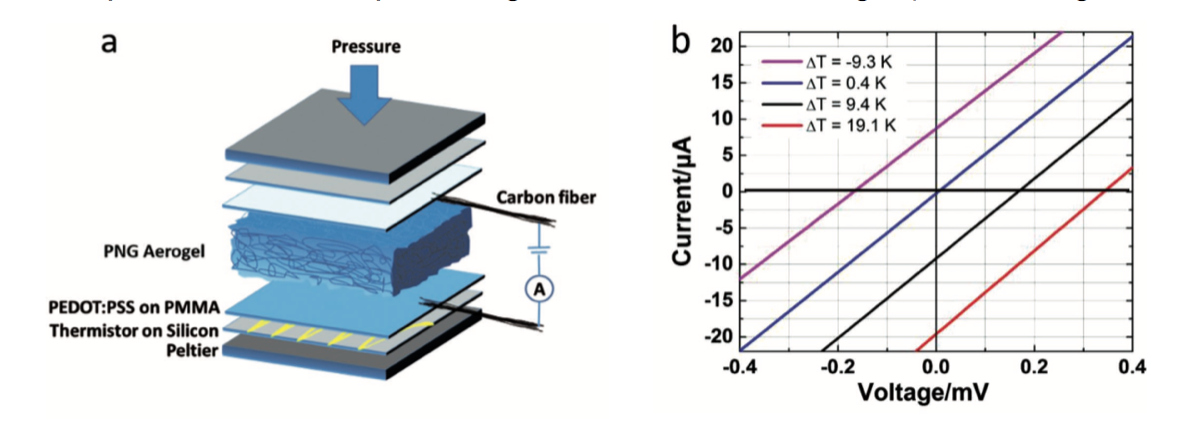Although we might not recognize it, electronic sensors have developed into essential components in our everyday life. They provide our smartphones with necessary information, guarantee safe travels in our cars and ensure that our homes are adequately air conditioned. With increasing automatization in the industrial and private sector (e.g. internet of things, smart home, autonomous driving, etc.), the importance of those tiny helpers for our prosperity, well-being and safety will only increase. Therefore, it will be essential to develop more efficient, powerful and complex sensors, which are able to process information in a reliable fashion.
Researchers from the Linköping University (Sweden), were now able to manufacture a type of thermoelectric aerogel, which is able to simultaneously sense pressure and temperature. Moreover, the pressure and temperature signals are decoupled, allowing for a reliable synchronous measuring of both parameters.
The dual-parameter PNG aerogels sensors were synthesized from a mixture of poly3,4-ethylenedioxythiophene:polystyrene sulfonate (PEDOT:PSS), nano-fibrillated cellulose (NFC) and glycidoxypropyl trimethoxysilane (GOPS). This precursor selection led to an elastic, yet robust thermoelectric PNG aerogel, being able to sense pressure changes (NFC & GOPS) and temperature variations (PEDOT:PSS). Post-treatment in dimethylsulfoxide (DMSO) vapor not only increased the pressure sensitivity of the aerogel, but also resulted in a decoupling of the temperature and pressure signal by changing the internal charge carrier transport through the material.
Testing of the aerogel composite in an experimental setup, schematically depicted below, showed that pressure and temperature gradient could be obtained from two independent parameters of the current-voltage curve. The pressure signal is indicated by the slope, whereas the y-intercept denotes the temperature gradient across the aerogel (see also Figure below).
These revolutionary findings could pave the way for further research on multi parameter sensing aerogels, facilitating innovations which rely on powerful sensors. The Swedish research team already anticipates the utilization of their novel dual scale PNG aerogel in e-skin applications.
More details: Han et al.; Thermoelectric Polymer Aerogels for Pressure–Temperature Sensing Applications, Advanced Functional Materials, Volume 27, Issue 44 November 24, 2017. https://doi.org/10.1002/adfm.201703549,

